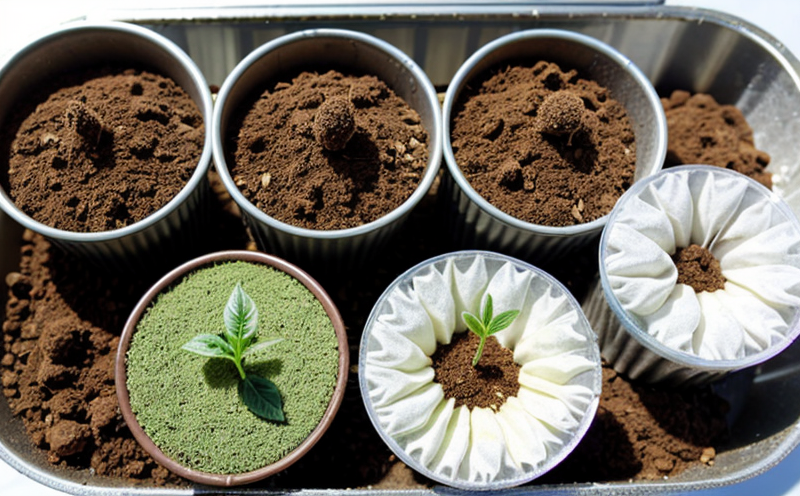Salt Stress Germination Testing
Understanding and ensuring seed quality is critical in agriculture, especially when dealing with environmental stressors. Salt stress, a common challenge faced by crops across various regions, can significantly impact germination rates and overall crop performance. Salt Stress Germination Testing evaluates how seeds perform under conditions of elevated salt concentrations, providing insights into their resistance to environmental stress.
The test is particularly important for breeders and agronomists working with crops that are exposed to saline soils or areas prone to salinity events. By subjecting seed samples to controlled salt stress environments, we can assess the resilience and viability of seeds under conditions similar to real-world scenarios. This information is invaluable for selecting robust varieties that can thrive in challenging agricultural landscapes.
For quality managers and compliance officers, this test ensures that seeds meet stringent standards set by regulatory bodies such as ISO or local governing authorities. It also helps in maintaining the integrity of supply chains by verifying the performance attributes of seeds before they reach the market. From a research and development perspective, Salt Stress Germination Testing is crucial for developing new varieties with enhanced stress tolerance.
The testing process involves germinating seed samples under controlled conditions where salt concentrations mimic environmental stress levels. This allows us to observe how well the seeds can withstand and recover from such stresses. The acceptance criteria for this test are based on predefined thresholds of germination percentage, which vary depending on the specific crop being tested.
Accurate and reliable Salt Stress Germination Testing is essential for ensuring that seeds meet both industry standards and the needs of farmers. By understanding how different seed varieties perform under stress conditions, we can make informed decisions about which seeds are best suited to various agricultural environments. This not only supports sustainable agriculture but also contributes to food security by promoting resilient crops.
It is important to note that this testing method is just one part of a comprehensive approach to ensuring seed quality. When combined with other tests such as germination rate, vigor index, and viability assessments, Salt Stress Germination Testing provides a holistic view of the performance attributes of seeds. This information is crucial for making decisions about which varieties are best suited for specific growing conditions.
Understanding the importance of this test extends beyond just agricultural practices. In regions where soil salinity is a significant issue, such as coastal areas or reclaimed lands, Salt Stress Germination Testing can play a pivotal role in identifying seed varieties that can contribute to successful reclamation projects and sustainable land use.
Applied Standards
| Standard | Description |
|---|---|
| ISO 3632-1:2007 | Determination of seed viability and germination—Part 1: General principles and definitions. |
| ASTM D4298-15 | Standard test methods for determination of water content in soil by gravimetric method. |
| EN ISO 63230:2017 | Determination of seed viability and germination—Part 4: Salt stress germination tests. |
| IEC 62752-3:2018 | Solar cell test methods—Part 3: Determination of salt spray resistance on solar cells. |
Benefits
The benefits of Salt Stress Germination Testing are multifaceted, offering value across different stakeholders in the agricultural sector. For quality managers and compliance officers, this test provides a robust framework to ensure that seed products meet the stringent requirements set by regulatory bodies. By adhering to these standards, they can maintain consumer confidence and protect their brand reputation.
From a research perspective, Salt Stress Germination Testing is an invaluable tool for R&D teams looking to innovate and develop new crop varieties with enhanced stress tolerance. This information helps in creating seeds that are better equipped to withstand environmental challenges, leading to improved yields and productivity.
For agronomists and farmers, this test offers critical insights into the performance of different seed varieties under stress conditions. This knowledge can guide them in selecting the most suitable seeds for their specific farming practices, thereby optimizing resource use and enhancing crop resilience.
The broader impact of Salt Stress Germination Testing extends to environmental conservation efforts. By identifying resilient seed varieties, we can support reclamation projects and sustainable land use initiatives, contributing to a more environmentally responsible agriculture sector.
Why Choose This Test
- Ensures compliance with international standards such as ISO 3632-1:2007 and ASTM D4298-15.
- Provides critical insights into seed performance under salt stress conditions, essential for sustainable agriculture.
- Supports the development of new crop varieties with enhanced stress tolerance, crucial for global food security.
- Meets regulatory requirements set by various governing bodies, ensuring product integrity and trustworthiness.
- Enables agronomists to make informed decisions about seed selection, optimizing resource use and enhancing productivity.
- Contributes to environmental conservation efforts through the identification of resilient seed varieties for reclamation projects.
- Promotes sustainable land use practices by supporting initiatives aimed at improving crop resilience in challenging environments.





